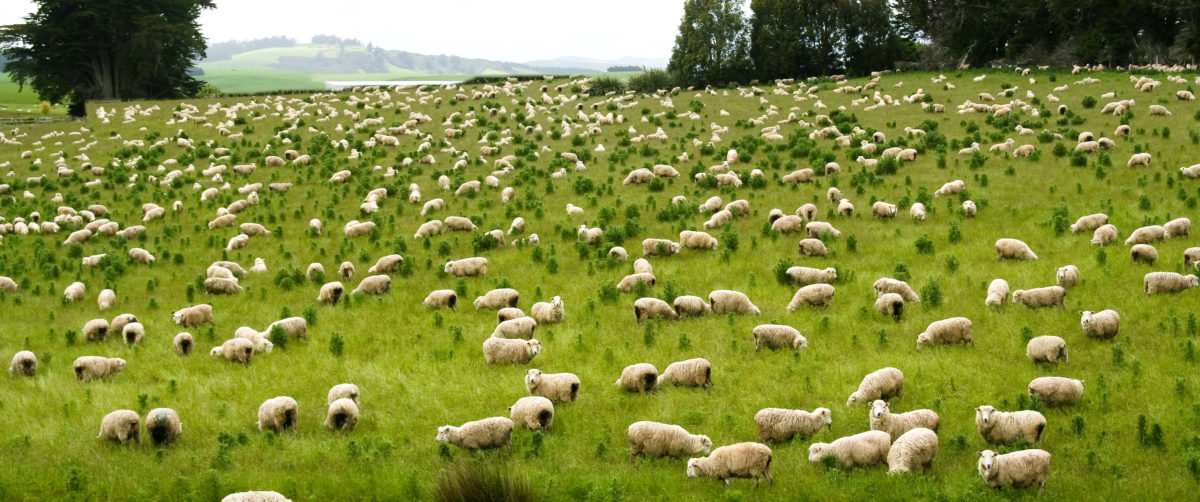Silver Fern Farms, a major company in NZ’s meat industry, stands to make huge export gains through its new data-driven solution to forecasting offal yield.
The business buys from thousands of farmers and processes 30% of the country’s lamb, beef and venison to generates more than $2.4 billion in annual sales and exports to more than 60 countries.
Through Digital Lean, a Callaghan Innovation programme that helps manufacturers apply Industry 4.0 technologies, such as robotics, artificial intelligence and data analytics, to innovate and grow, Silver Fern Farms focused on a less glamorous but important part of its business: offal.
“Take an animal that weighs 250 kilograms, for example. How can you tell how much liver, heart and tongue it will yield?” asks Dylan Marsh, Continuous Improvement Manager at Silver Fern Farms.
After identifying the problem — and business opportunity — Silver Fern Farms used tech-driven methodologies through Digital Lean to find solutions to predicting offal yield.
Until recently, Silver Fern Farms would mainly forecast annual yields and set targets accordingly. But offal yields change monthly or even daily.
Silver Fern Farms found its yield models weren’t sensitive enough to detect factors that could affect how much meat came into its plants, such as climatic conditions leading to drought or disease in animals.
“We’d ask ourselves, why aren’t we reaching our production targets? Our excuse was that the targets weren’t accurate.”
The company teamed up with productivity experts LMAC Consulting and data specialists Litmus Datatech to apply data analytics and machine learning to achieve more accurate yield forecasting.
“Litmus [Datatech] started with using 12 months’ of our data and then began to feed in data sets from other sources that give us a view of expected yield,” says Marsh.
Additional data sets included NIWA climate information and farm and animal-specific data. For the first time, the business consolidated silos of information, with algorithms considering multiple factors and predicting yield, allowing Silver Fern Farms to more accurately predict yield before processing.
“As the machine learning picks up, we want to get to the point that we know what our ‘kill level’ is going to be for the day.”
Silver Fern Farms now displays its new data analytics via visual dashboards, helping staff to gain insights into more dynamic yield forecasts, and it’s already proving popular with them.
“Our reporting used to just be a spreadsheet full of figures. The average person’s eyes would glaze over;the data was meaningless,” says Marsh.
The simple dashboard, displayed in processing rooms, shows information staff can relate to, such as dollars per head or kilograms per head of livestock.
Marsh believes the new data modelling will also have major benefits for the wider business, such as an increased awareness of performance in real-time, enabling staff to make changes, and increased confidence in how individual plants are tracking against production targets. The modelling is scalable across plants, allowing Silver Fern Farms to amplify the benefits seen at the Hawera plant, where the Digital Lean project was first piloted.
The modelling proved that the most significant variable came down to the people and their level of experience, and provides a compelling business case for leaders to invest heavily in staff training, as it also benefits the bottom line. Staff also feel a greater sense of accountability for their results, increasing their motivation.
The Digital Lean programme has also allowed Silver Fern Farms’ staff to be freed to focus on value-add activities, such as data analysis and providing insights on fixing issues during processing.
Once fully implemented, Silver Fern Farms expects the new data system will save business analysts up to 90 minutes a and similar time savings for plant managers, but also produce more actionable data insights.
The improved yield, achieved through more accurate forecasting, has significant potential to benefit the company’s bottom line. When it came to thick skirt, a lower-value cut of meat grouped in with offal, a 5% increase was achieved. Maintaining this higher yield over one year would equate to a profit increase of $33,000. And if the same improved yield was applied to all offal product categories, that would equate to a $500,000 per a profit increase at the Hawera plant alone. .
Callaghan Innovation’s assistance through Digital Lean had also drawn the company’s attention to the potential of Industry 4.0, says Marsh, adding there’s still plenty for the business to learn:
“Bringing in industry expertise will really change what we do,” says Marsh.
However, Silver Fern Farms acknowledges some tasks will still need to be done manually for now due to their complexity, such as breaking down a carcass.
“Every animal is different, both in shape and in size, and it could be decades before you get a robot intuitive enough to deal with that,” Marsh says.
“But at the point in the process when you are dealing with pieces of meat and then cartons, there’s huge scope for automation there.”
The major benefit for Silver Fern Farms is being able to apply findings from the pilot to its future strategy and to incorporate into its business model.
——-
Digital Lean is Callaghan Innovation’s programme to assist New Zealand businesses make the most of Industry 4.0 technologies and approaches.
Source: Callaghan Innovation












